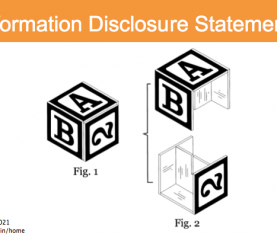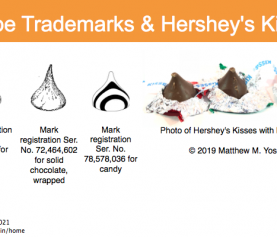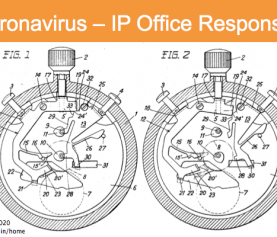Micro entity status in patent applications
The USPTO defines three categories of applicants and inventors: you can apply as a large entity, small entity, or micro entity. Why does this matter? The entity size affects the fees owed to the USPTO for nearly every filing you make related to a patent application. Read on to discover more about the categories of patent applicant size (and take a look at my blog post on patent application cost for examples of how entity size changes the fees owed to the USPTO).
What is entity size for patent application purposes?
In the patent context, “entity” means an applicant for a patent: a party that has applied for a patent, or is working with the USPTO to get a patent issued.
What is a large entity?
A large entity is the default category for a patent applicant. As a large entity, you would pay the full costs of the USPTO’s fee schedule (spoiler alert: it is long). If you don’t assert that you are a small entity or a micro entity, you will be considered a large entity.
What is a small entity?
A small entity is a person, small business, or non-profit (as defined in 37 CFR 1.27). The applicant must not have assigned the rights to the invention to a large entity, and if the entity is a non-profit, it meet any of several criteria. To be a small business, a business must meet the Small Business Administration’s limit of 500 or fewer employees or affiliates (as defined in 13 CFR 121.802). As a small entity, you’re entitled to a 50% discount (relative to a large entity) on most fees owed to the USPTO.
What is a micro entity?
A micro entity is a small entity that meets additional criteria. To be a micro entity, you must qualify as a small entity, and then qualify for micro entity status in one of two ways: either the “gross income and application filing limit” basis, or the “institution of higher education” basis.
Gross income and application filing limit basis
You can qualify as a micro entity if the applicant can certify all of the following, as set out in 37 CFR 1.29(a):
- The applicant is a small entity.
- The applicant and all inventors have been listed as inventors on fewer than four previously filed US non-provisional patent applications (these don’t count towards this limit: foreign applications, US provisional patent applications, and international applications for which the basic national fee was not paid).
- The applicant and all inventors must have each had, counting individually, a gross income equal or less than three times the median household income. We count each person’s or company’s income in the previous calendar year (relative to when you’re filing or paying a USPTO fee), and compare it to household income for that year. If a person is married, don’t count the spouse’s income, regardless of how they filed their taxes. At present, that income cut-off is $160,971 (may be updated at this USPTO page, usually in September or October of each year).
- The applicant and all inventors have not assigned, and don’t have to assign, a license or other ownership interest in the patent application to an entity that wouldn’t meet the gross income cut-off listed above.
Institution of higher education basis
You can qualify also as a micro entity if the applicant can certify both of the following, as set out in 37 CFR 1.29(d):
- The applicant is a small entity.
- (i) The applicant’s employer (where the applicant gets most of his or her income), is an institution of higher education; or (ii) the applicant has assigned, or is obliged to assign, a license or other ownership interest in the patent application to an institution of higher education.
How and when do you tell the USPTO which size entity you are?
If the applicant is a large entity, there’s nothing to tell the USPTO. Just pay the undiscounted USPTO fees. If the applicant is a small entity, the applicant must assert the small entity status in writing, or by paying the exact amount of any of several fees required in a patent application (see 37 CFR 1.27(c)(1) and 1.27(c)(3)). An applicant should assert small entity status as soon as it is true, and it remains in effect until it is no longer true – so you only need to assert it once. For micro entity status, an applicant must assert in writing that the applicant meets one of the two bases (gross income plus applications filed, or higher education), as above. The simplest way is to file a USPTO form, either with other application materials, or after filing when the applicant later has micro entity status (see 37 CFR 1.29(e)-(j)). Like small entity status, micro entity status remains in effect for the duration of the application – as long as it is still true. If the applicant loses micro entity status, you must file a notification saying so. That doesn’t necessarily mean the entity loses small entity status. If an applicant loses small entity status, you must file a notification saying so. For any loss of micro entity or small entity status, paying the appropriate (larger) fee is not sufficient to notify the USPTO of the loss of the micro or small status. Do not pay reduced fees that you know you’re not entitled to: that’s fraudulent, and can adversely the patent application and the applicant’s rights.
What effect does micro entity status have on USPTO fees?
Filing as a large entity means you will pay full price for each USPTO fee. As a small entity, you get 50% off most of those fees (for filing, searching, examining, issuing, appealing, and maintaining patent applications and patents), and as a micro entity, you get 75% off those fees. Clearly, it is worth the time to work with your attorney to determine the applicable entity size for your patent application, and to certify for small entity or micro entity status if applicable. Wondering why the image for this blog post is a collage of portraits? I chose images of Abraham Lincoln, Alexander Hamilton, and Andrew Jackson from the U.S. $5, $10, and $20 bills, which have the same relative proportions as the USPTO fees for micro, small, and large entities.
Any questions?
Do you have questions? Agree or disagree? I’d be glad to hear from you in the comments. Call me at 617-340-9295 or email me at my Contact Me page. Or, find me on Facebook, Twitter, Google+, LinkedIn, Google Local, or Avvo. Check back soon for a blog post illustrating USPTO fees, at different entity sizes, for an example patent application, and for a blog post on what happens to entity size when assigning rights in a patent application to another person or company.







[…] you typically can extend for up to four additional months, each with an extra fee (which vary with entity size). It’s important to address this, and every, Office Action […]